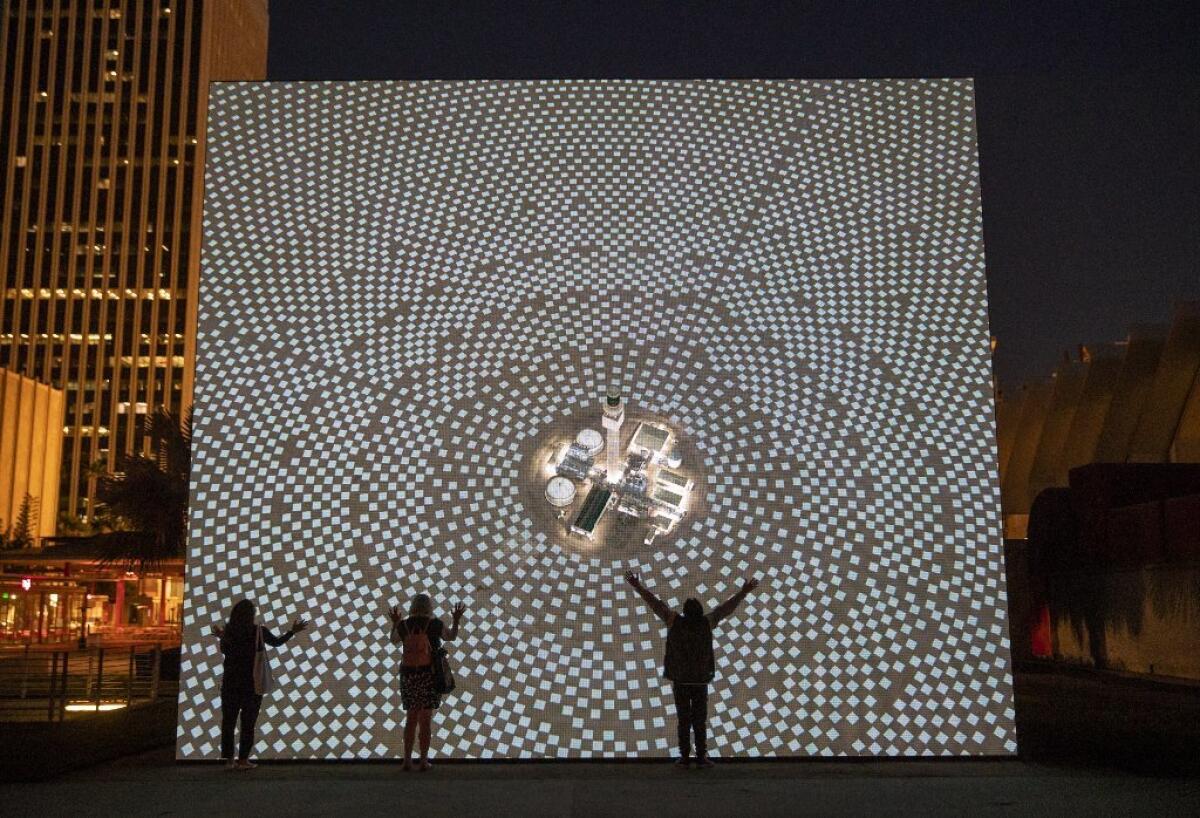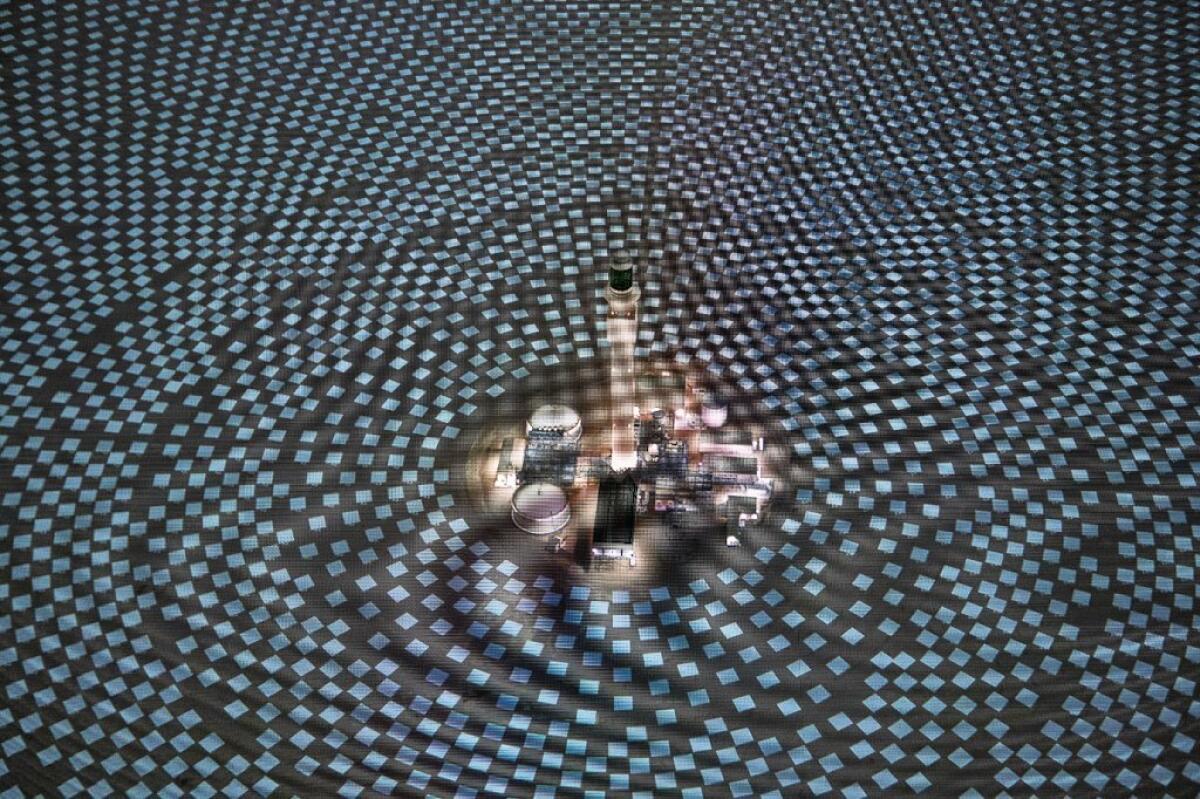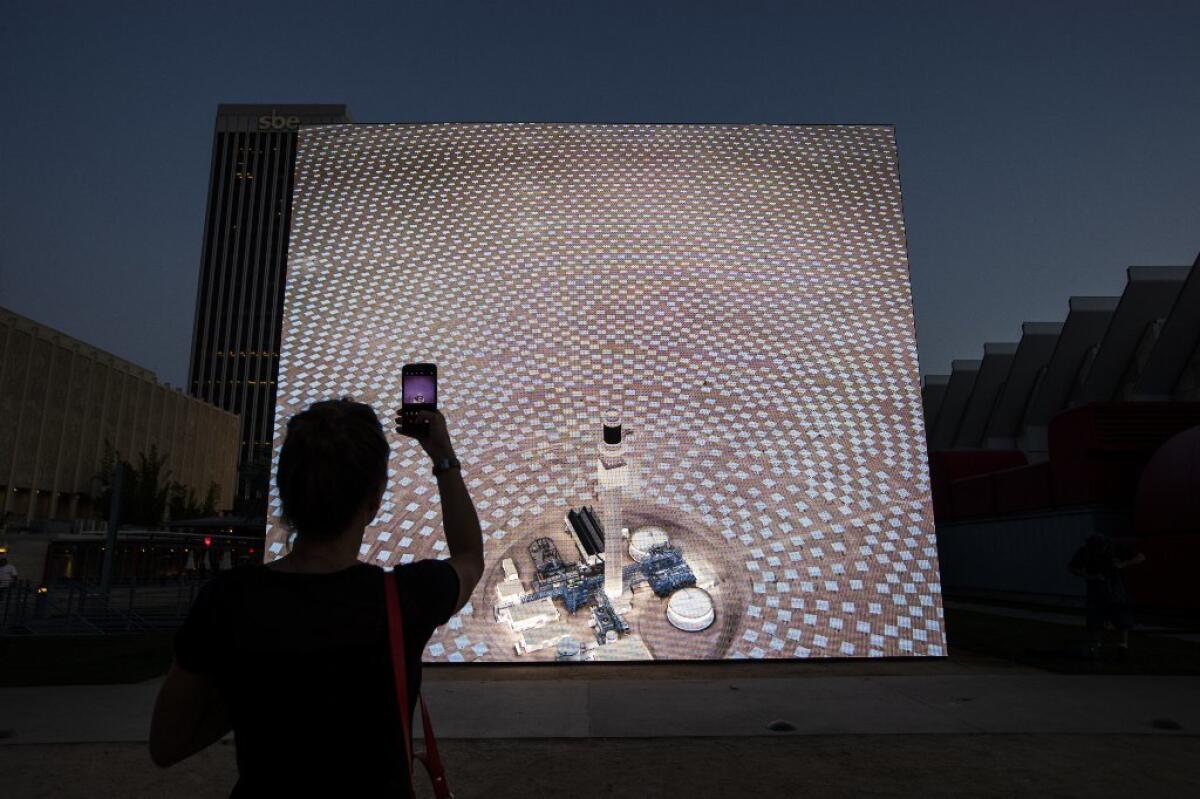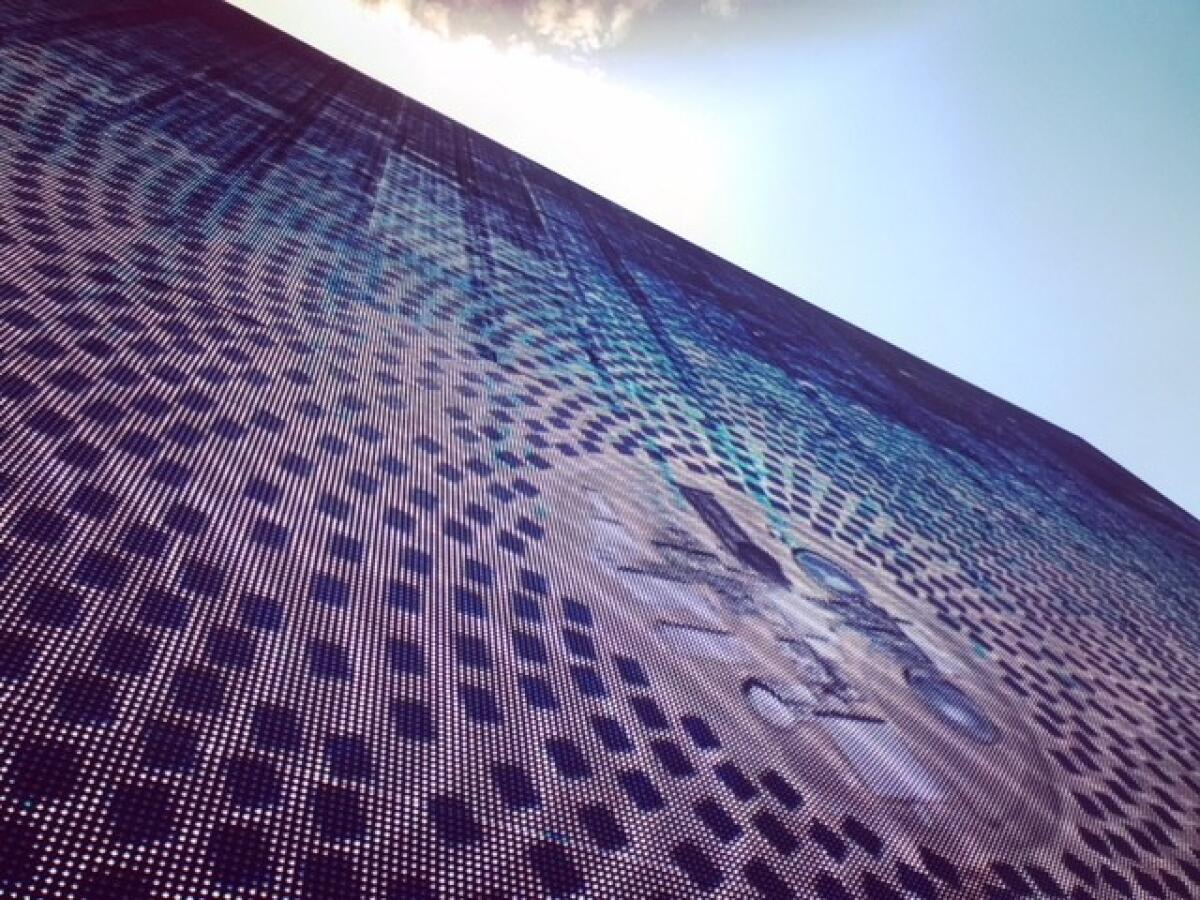LACMA debuts its ‘Solar Reserve,’ a digital sculpture addressing energy conservation

It seems appropriate that the Los Angeles County Museum of Art would debut “Solar Reserve (Tonopah, Nevada) 2014” on the heels of a record breaking heat wave. John Gerrard’s installation, which opened to the public July 12, is a digital simulation of a solar thermal power plant in the Nevada desert, and it addresses energy conservation and the mythical nature of the sun, among other topics.
On a sweltering July afternoon, the Dublin-based Gerrard, in town for the installation, eyeballs the newly-installed work, a 24-foot-tall wall of tiny LEDs resting on the museum’s Resnick lawn, shimmering in the unrelenting sunlight. Gerrard used gaming technology to create a virtual world that mimics the positions of the sun, in real time, over the Solar Reserve site during the course of a year. At this moment, the work depicts an aerial view of the power plant, concentric circles of tile-like mirrors with a tower at its center that, all together, resembles an ancient, slate-gray sundial of sorts. But the image morphs throughout the day, as the power plant’s 10,000 mirrors continuously shift, tracking the sun.
The piece has ancient undertones, echoing prehistoric solar structures such as Stonehenge; but it’s also timely, addressing diminishing oil supplies globally.
“We’re consuming vast quantities of energy, which is petroleum, at the moment. So I’ve produced a portrait of an existing solar facility,” Gerrard says. “It’s a hopeful symbol because it points to a set of sustainable futures. But it’s also an apparition — this is a virtual world; this is not real. And I hope the subtle underpinning of the work is ‘How real is this vision that we can continue to consume at this level, globally, and rely on local energy sources?’”


Originally commissioned by New York’s Public Art Fund, which presented it at Lincoln Center in 2014, “Solar Reserve” hasn’t been shown in the U.S. since. Two years ago, Leonardo DiCaprio purchased it as a gift for LACMA.
And Los Angeles, Gerrard says, is the perfect city in which to view the work.
“The West Coast of America has provided many things, cinema and, more recently, technology. This piece talks about [both],” Gerrard says. “But also, the colors — the blues, the browns, it’s so beautifully situated in this setting. The dirt here is the same color as the dirt in Tonopah, Nevada. It just seems to fit here.”
“Solar Reserve,” a “found piece of land art,” as Gerrard calls it, was also inspired by the California Light and Space artists, including James Turrell, Larry Bell, John McCracken and Robert Smithson. At the same time, the work is intrinsically Californian in its experimental nature.
“This is an area, artistically, that’s wide open,” Gerrard says. “It’s moving images post-camera, algorhythmically, data driven images.”
By late afternoon, “Solar Reserve” has faded into an abstract-looking wash of luminescent, violet hues. Gerrard peers, proudly, at his work from under the brim of a LACMA-branded parasol. He runs his hand over the LED wall’s bumpy, pimpled surface, something he encourages visitors to do.
“It’s not a film, it’s a sculpture; it just happens to be virtual,” he says. “I wanted it to be a bit slippery, between the real and the unreal.”

Follow me on Twitter: @debvankin
More to Read
The biggest entertainment stories
Get our big stories about Hollywood, film, television, music, arts, culture and more right in your inbox as soon as they publish.
You may occasionally receive promotional content from the Los Angeles Times.







